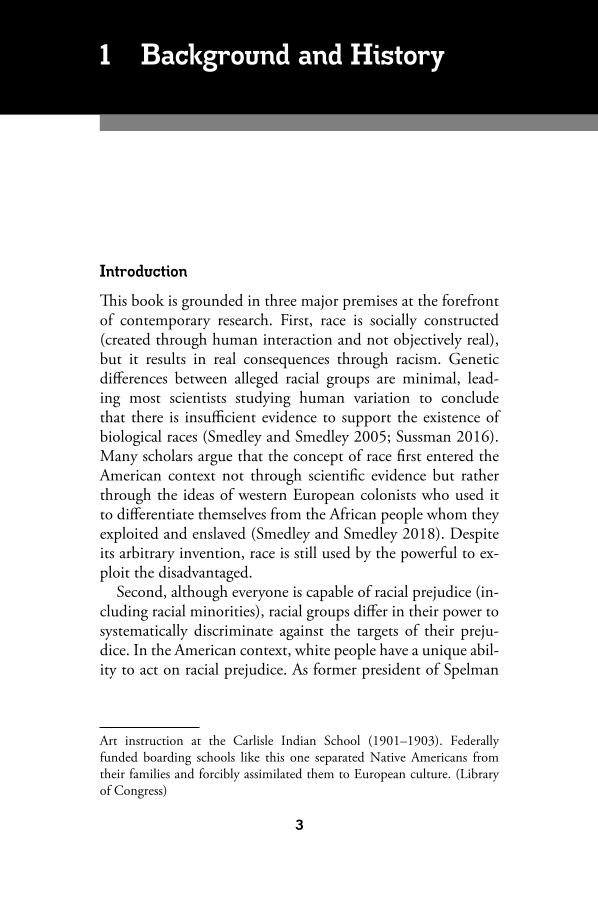Introduction Th is book is grounded in three major premises at the forefront of contemporary research. First, race is socially constructed (created through human interaction and not objectively real), but it results in real consequences through racism. Genetic diff erences between alleged racial groups are minimal, lead- ing most scientists studying human variation to conclude that there is insuffi cient evidence to support the existence of biological races (Smedley and Smedley 2005 Sussman 2016). Many scholars argue that the concept of race fi rst entered the American context not through scientifi c evidence but rather through the ideas of western European colonists who used it to diff erentiate themselves from the African people whom they exploited and enslaved (Smedley and Smedley 2018). Despite its arbitrary invention, race is still used by the powerful to ex- ploit the disadvantaged. Second, although everyone is capable of racial prejudice (in- cluding racial minorities), racial groups diff er in their power to systematically discriminate against the targets of their preju- dice. In the American context, white people have a unique abil- ity to act on racial prejudice. As former president of Spelman Background and History 1 Art instruction at the Carlisle Indian School (1901–1903). Federally funded boarding schools like this one separated Native Americans from their families and forcibly assimilated them to European culture. (Library of Congress) 3
Document Details My Account Print multiple pages
Print
You have printed 0 times in the last 24 hours.
Your print count will reset on at .
You may print 0 more time(s) before then.
You may print a maximum of 0 pages at a time.












































































































































































































































































































































































